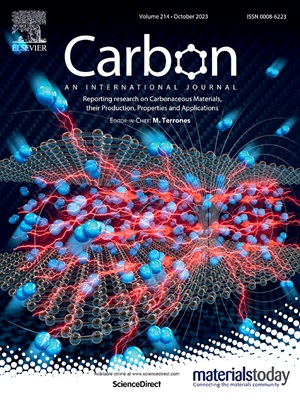Biodegradable thermoelectrics based on water-processable carboxymethyl cellulose and single-walled carbon nanotube composites
IF 11.6
2区 材料科学
Q1 CHEMISTRY, PHYSICAL
引用次数: 0
Abstract
The growing demand for sustainable energy solutions has accelerated the development of biodegradable thermoelectric (TE) materials for eco-friendly energy-harvesting systems. Herein, we have developed biodegradable TE materials using water-processable carboxymethyl cellulose (CMC) and single-walled carbon nanotube (SWCNT) composites with p-type and n-type additives that simultaneously enhance TE performance and biodegradability. The incorporation of these additives improved the TE properties of the CMC/SWCNT composite films. This improvement was achieved by efficiently modulating the p-type and n-type doping levels, thereby optimizing overall TE performance. Biodegradation tests using mealworms demonstrated that both p-type and n-type TE films completely degraded within five days, and a strong correlation was observed between the films' Young's modulus and their degradation half-life. Furthermore, Fourier transform infrared spectroscopy confirmed that the CMC matrix component was enzymatically degraded by the mealworms, thereby accelerating the breakdown of the TE films. These findings underscore the potential of CMC/SWCNT composites as sustainable organic TE materials, paving the way for their future integration into environmentally low-impact, circular electronics.

基于可水处理羧甲基纤维素和单壁碳纳米管复合材料的可生物降解热电材料
对可持续能源解决方案日益增长的需求加速了用于环保能源收集系统的可生物降解热电(TE)材料的发展。在此,我们开发了可生物降解的TE材料,使用可水处理的羧甲基纤维素(CMC)和单壁碳纳米管(SWCNT)复合材料,并添加p型和n型添加剂,同时提高了TE的性能和可生物降解性。这些添加剂的加入改善了CMC/ swcnts复合薄膜的TE性能。这种改进是通过有效地调制p型和n型掺杂水平来实现的,从而优化了整体TE性能。利用粉虫进行的生物降解试验表明,p型和n型TE膜在5天内完全降解,并且观察到膜的杨氏模量与其降解半衰期之间存在很强的相关性。此外,傅里叶变换红外光谱证实了CMC基质组分被粉虫酶降解,从而加速了TE膜的分解。这些发现强调了CMC/ swcnts复合材料作为可持续有机TE材料的潜力,为其未来整合到环境低影响的循环电子产品中铺平了道路。
本文章由计算机程序翻译,如有差异,请以英文原文为准。
求助全文
约1分钟内获得全文
求助全文
来源期刊

Carbon
工程技术-材料科学:综合
CiteScore
20.80
自引率
7.30%
发文量
0
审稿时长
23 days
期刊介绍:
The journal Carbon is an international multidisciplinary forum for communicating scientific advances in the field of carbon materials. It reports new findings related to the formation, structure, properties, behaviors, and technological applications of carbons. Carbons are a broad class of ordered or disordered solid phases composed primarily of elemental carbon, including but not limited to carbon black, carbon fibers and filaments, carbon nanotubes, diamond and diamond-like carbon, fullerenes, glassy carbon, graphite, graphene, graphene-oxide, porous carbons, pyrolytic carbon, and other sp2 and non-sp2 hybridized carbon systems. Carbon is the companion title to the open access journal Carbon Trends. Relevant application areas for carbon materials include biology and medicine, catalysis, electronic, optoelectronic, spintronic, high-frequency, and photonic devices, energy storage and conversion systems, environmental applications and water treatment, smart materials and systems, and structural and thermal applications.
 求助内容:
求助内容: 应助结果提醒方式:
应助结果提醒方式:


